Abstract
Three mathematical models were proposed to describe the effects of sorption of both bacteria and the herbicide (2,4-dichlorophenoxy)acetic acid (2,4-D) on the biological degradation rates of 2,4-D in soils. Model 1 assumed that sorbed 2,4-D is not degraded, that only bacteria in solution are capable of degrading 2,4-D in solution, and that sorbed bacteria are not capable of degrading either sorbed or solution 2,4-D. Model 2 stated that only bacteria in the solution phase degrade 2,4-D in solution and that only sorbed bacteria degrade sorbed 2,4-D. Model 3 proposed that sorbed 2,4-D is completely protected from degradation and that both sorbed and solution bacteria are capable of degrading 2,4-D in solution. These models were tested by a series of controlled laboratory experiments. Models 1 and 2 did not describe the data satisfactorily and were rejected. Model 3 described the experimental results quite well, indicating that sorbed 2,4-D was completely protected from biological degradation and that sorbed- and solution-phase bacteria degraded solution-phase 2,4-D with almost equal efficiencies.
Full text
PDF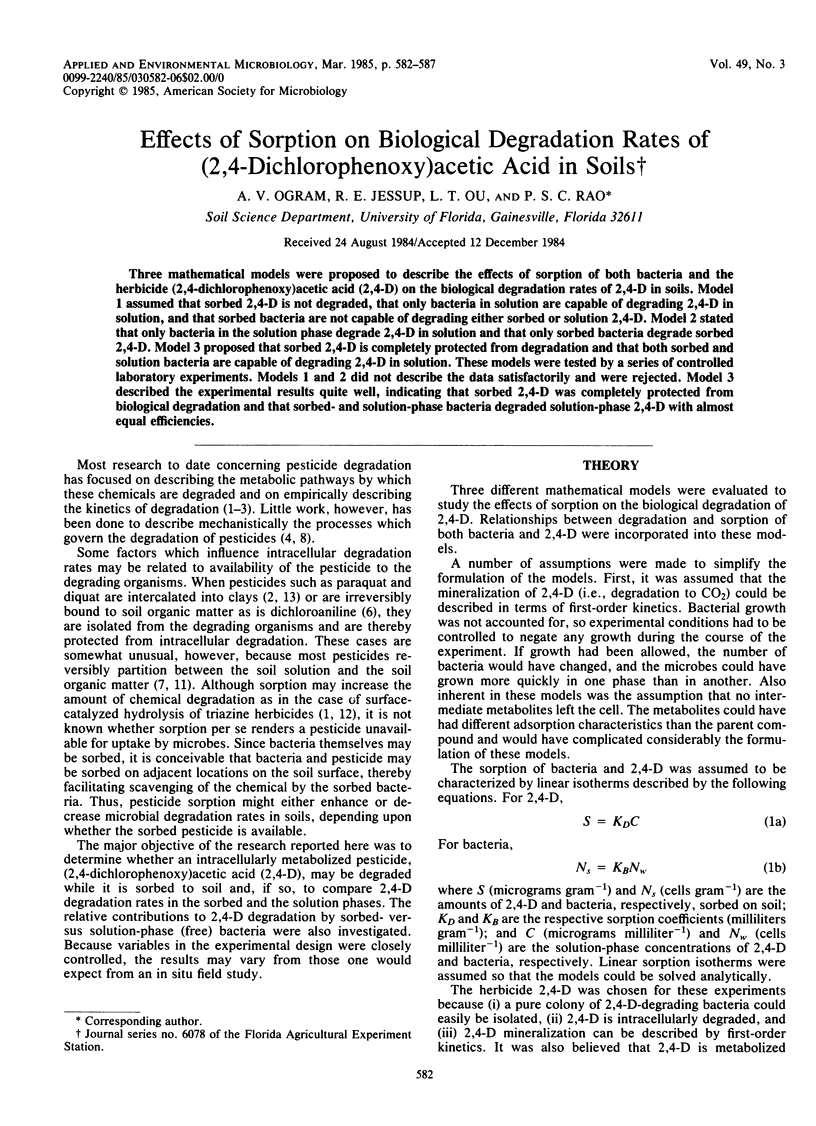

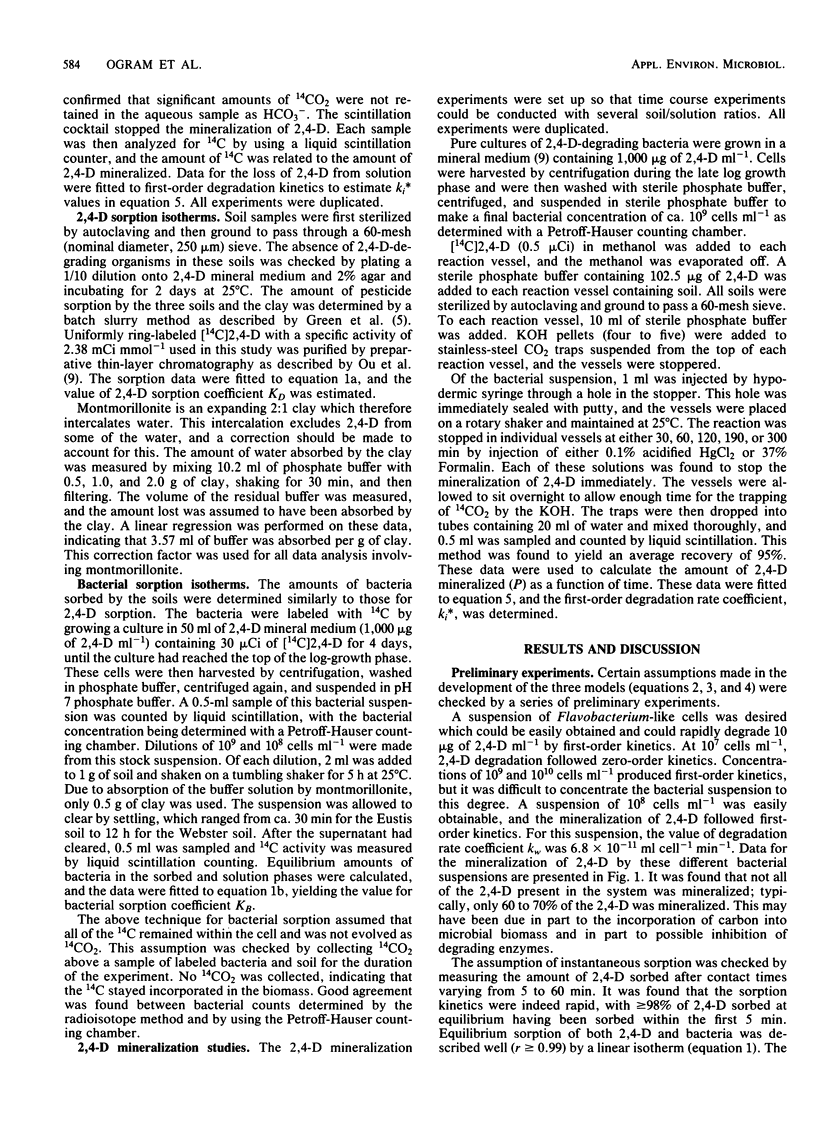
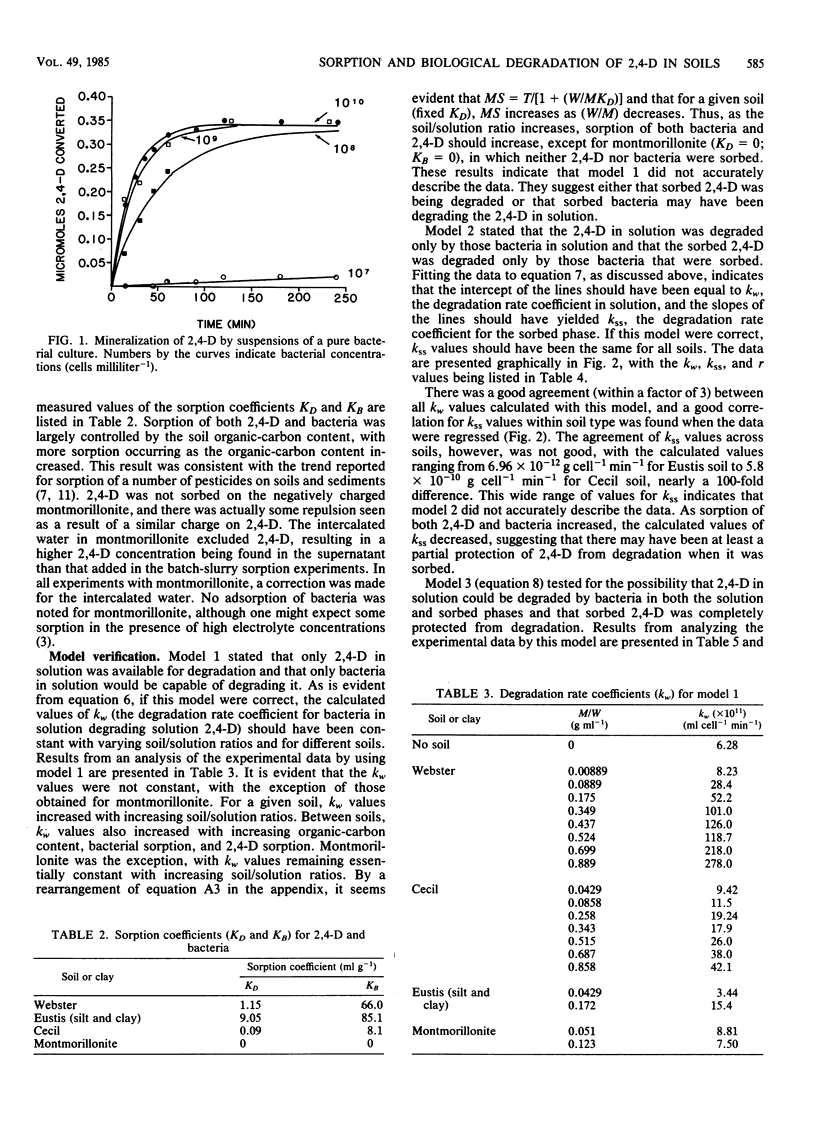
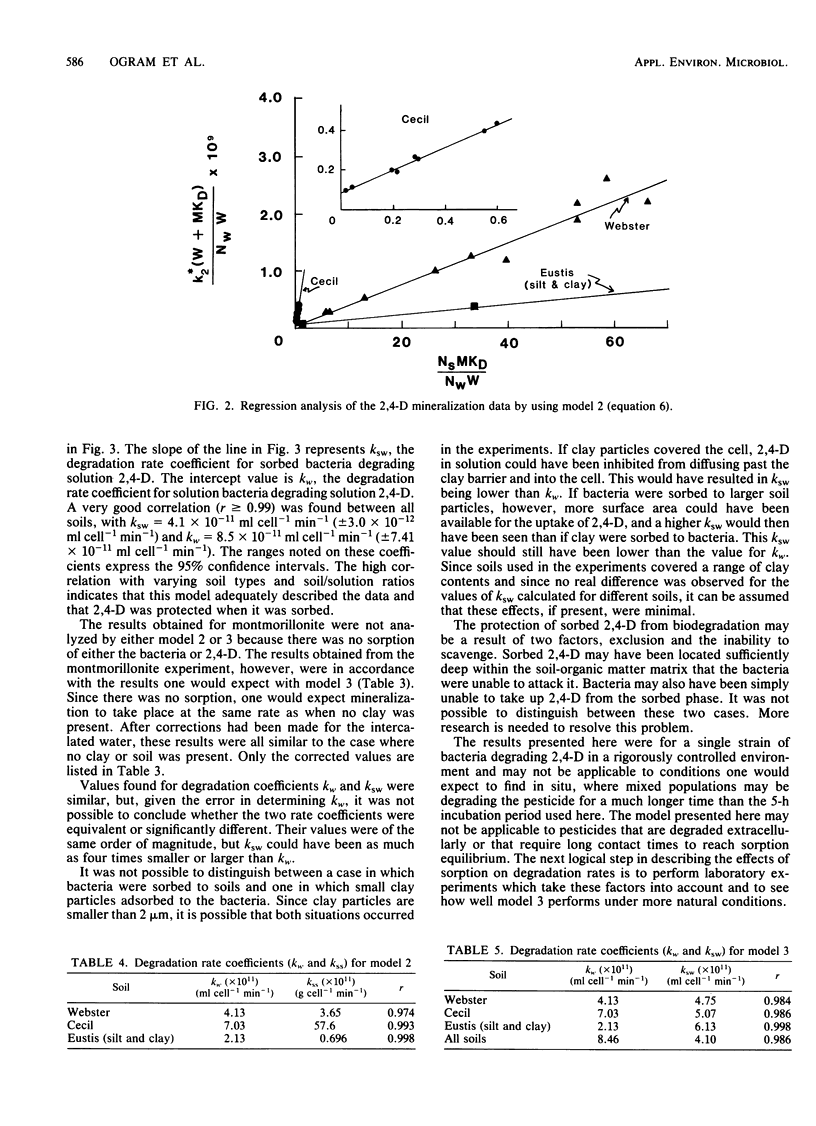
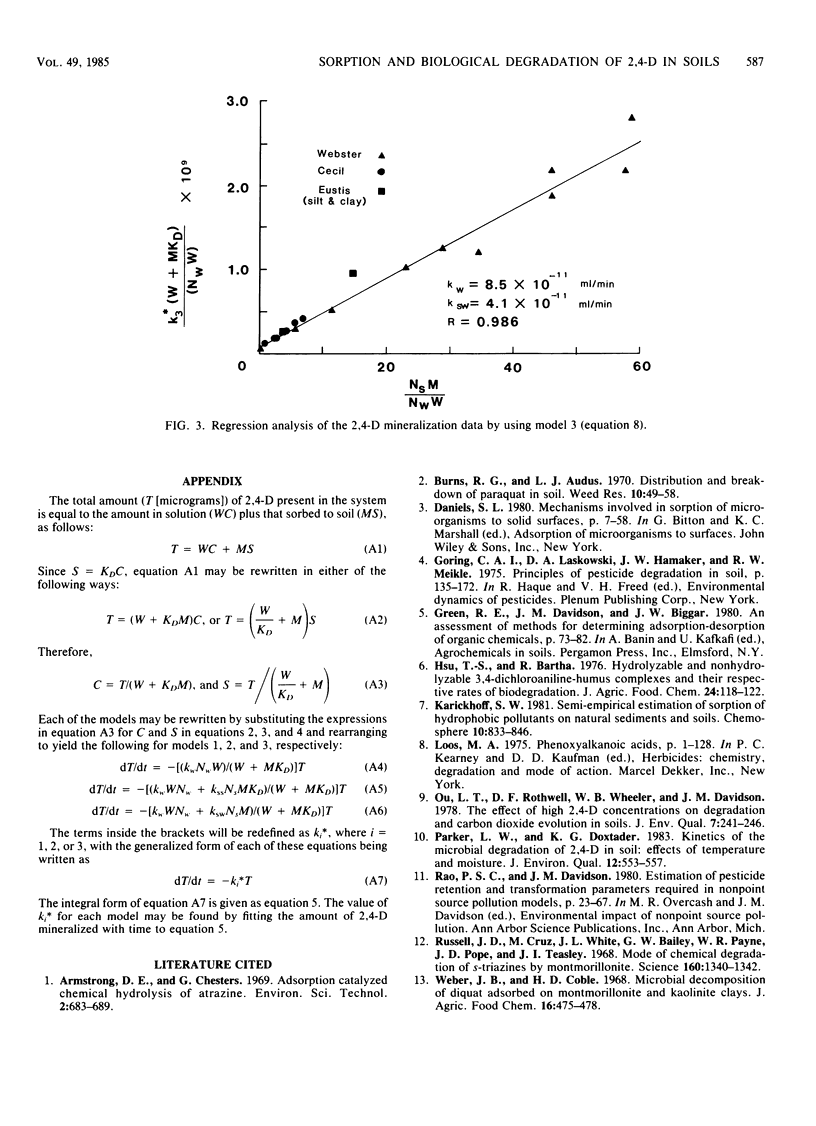
Selected References
These references are in PubMed. This may not be the complete list of references from this article.
- Hsu T. S., Bartha R. Hydrolyzable and nonhydrolyzable 3,4-dichloroaniline-humus complexes and their respective rates of biodegradation. J Agric Food Chem. 1976 Jan-Feb;24(1):118–122. doi: 10.1021/jf60203a021. [DOI] [PubMed] [Google Scholar]
- Russell J. D., Cruz M., White J. L., Bailey G. W., Payne W. R., Jr, Pope J. D., Jr, Teasley J. I. Mode of Chemical-Degradation of s-Triazines by Montmorillonite. Science. 1968 Jun 21;160(3834):1340–1342. doi: 10.1126/science.160.3834.1340. [DOI] [PubMed] [Google Scholar]


